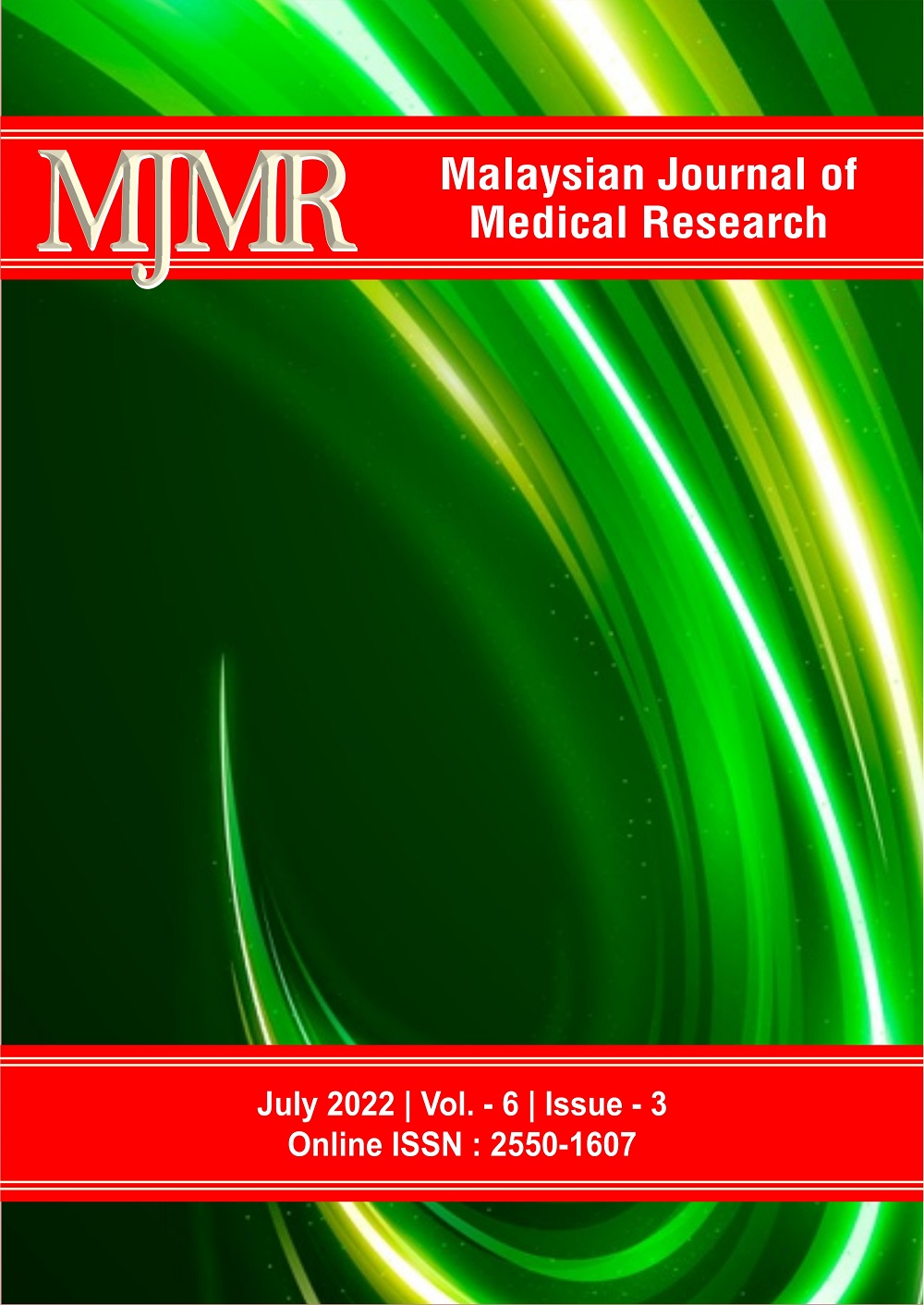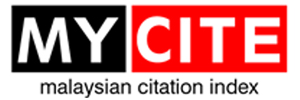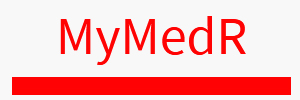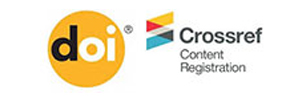A Mixed-Method Analysis of People’s Perception and Behaviour on Vaccination Program in Online Social Media
DOI:
https://doi.org/10.31674/mjmr.2022.v6i03.002Abstract
Introduction: Social media has been a major source of various parties obtaining misinformation about vaccination programs and it has raised doubts about the vaccine, especially among parents. Vaccine hesitancy was listed as one of the top ten issues that threaten global health by the World Health Organization (WHO) in 2019. Therefore, this study aimed to examine sentiment on vaccines from Facebook pages, focusing on Facebook users’ views on vaccination programs through a mixed-method approach, which is a qualitative and quantitative combination analysis. Methods: This analysis uses all comments posted on Facebook pages downloaded using Facepager software from 01 December 2020 to 31 December 2020. R software is used to clean the comments and performed the sentiment analysis, while Gephi software is used to perform the semantic network analysis. Results: Out of 5,055 comments, the majority of the comments are negative sentiment (49.33%), followed by positive (32.58%) and neutral (18.08%) sentiment. For the negative sentiment, tolak, mati, and cucuk were the most frequent words ever used. For the positive sentiment, terima, setuju, and selamat were the most frequent words ever used. The positive network centered around the word dajjal focused on the word lab and FDA. In contrast, the negative network centered around the word vaksin focused on the word semulajadi and kerajaan. Conclusion: These findings are useful to understand the problem of parents who are skeptical of the vaccination program and also can be a guide for public health to communicate with the public through social media.
Keywords:
Vaccine Hesitancy, Sentiment Analysis, Semantic Network Analysis, Social MediaDownloads
References
Abas, A. (2016), Five diphtheria deaths in Malaysia so far. NST Online: https://www.nst.com.my/news/2016/06/155591/five-diphtheria-deaths-malaysia-so-far
Abdullah, N. H. (2016). Kenyataan Akhbar KPK 26 Ogos 2016 – Status Kes Difteria di Malaysia – From the Desk of the Director-General of Health Malaysia. https://kpkesihatan.com/2016/08/26/kenyataan-akhbar-kpk-26-ogos-2016-status-kes-difteria-di-malaysia/
Ahmad, N. A., Jahis, R., Kuay, L. K., Jamaluddin, R., & Aris, T. (2017). Primary immunization among children in malaysia: Reasons for incomplete vaccination. J Vaccines Vaccin, 8(3), 2. https://doi.org/10.4172/2157-7560.1000358
Ainin, S., Feizollah, A., Anuar, N. B., & Abdullah, N. A. (2020). Sentiment analyses of multilingual tweets on halal tourism. Tourism Management Perspectives, 34, 100658. https://doi.org/10.1016/j.tmp.2020.100658
Allaire, J. (2012). RStudio: Integrated development environment for R. Boston, MA, 770, 394.
Al-Saffar, A., Awang, S., Tao, H., Omar, N., Al-Saiagh, W., & Al-Bared, M. (2018). Malay sentiment analysis based on combined classification approaches and Senti-lexicon algorithm. PloS One, 13(4), e0194852. https://doi.org/10.1371/journal.pone.0194852
An, H., & Park, M. (2020). Approaching fashion design trend applications using text mining and semantic network analysis. Fashion and Textiles, 7(1), 1–15. https://doi.org/10.1186/s40691-020-00221-w
Anthony Appiah, K. (2021). As a Doctor, May I Refuse to See Unvaccinated Patients? - The New York Times. The Ethicist, The New York Times Magazine. https://www.nytimes.com/2021/07/13/magazine/vaccination-patients-ethics.html?smtyp=cur&smid=fb-nytimes
Asari, K. N., Makhtar, M., Asuhaimi, F. A., & Pauzai, N. A. (2018). Compulsory Childhood Vaccination in Malaysia: Public Health versus Parental Autonomy. International Journal Of Academic Research In Business And Social Sciences, 8(12). http://dx.doi.org/10.6007/IJARBSS/v8-i12/5256
Awadh, A. I., Hassali, M. A., Al-lela, O. Q., Bux, S. H., Elkalmi, R. M., & Hadi, H. (2014). Immunization knowledge and practice among Malaysian parents: a questionnaire development and pilot-testing. BMC public health, 14, 1107. https://doi.org/10.1186/1471-2458-14-1107
Mohd Azizi, F. S., Kew, Y., & Moy, F. M. (2017). Vaccine hesitancy among parents in a multi-ethnic country, Malaysia. Vaccine, 35(22), 2955–2961. https://doi.org/10.1016/j.vaccine.2017.04.010
Abu Bakar, M.F., Idris, N., Shuib, L., & Khamis, N. (2020). Sentiment Analysis of Noisy Malay Text: State of Art, Challenges and Future Work. IEEE Access, 8, 24687-24696.
Ban, H.-J., & Kim, H.-S. (2019). Semantic network analysis of hotel package through the big data. Culinary Science & Hospitality Research, 25(2), 110–119. https://doi.org/10.20878/cshr.2019.25.2.014
Bastian, M., Heymann, S., & Jacomy, M. (2009). Gephi: An open source software for exploring and manipulating networks. Proceedings of the International AAAI Conference on Web and Social Media, 3(1). https://doi.org/10.13140/2.1.1341.1520
Beauchamp M. A. (1965). AN IMPROVED INDEX OF CENTRALITY. Behavioral science, 10, 161–163. https://doi.org/10.1002/bs.3830100205
Betsch, C., & Böhm, R. (2016). Detrimental effects of introducing partial compulsory vaccination: experimental evidence. European journal of public health, 26(3), 378–381. https://doi.org/10.1093/eurpub/ckv154
Betsch, C., Böhm, R., & Chapman, G. B. (2015). Using behavioral insights to increase vaccination policy effectiveness. Policy Insights from the Behavioral and Brain Sciences, 2(1), 61–73. https://doi.org/10.1177/2372732215600716
Bonacich, P. (1972). Factoring and weighting approaches to status scores and clique identification. Journal of Mathematical Sociology, 2(1), 113–120. https://doi.org/10.1080/0022250X.1972.9989806
Budiharto, W., & Meiliana, M. (2018). Prediction and analysis of Indonesia Presidential election from Twitter using sentiment analysis. Journal of Big Data, 5(1), 1–10.
Callaghan, T., Motta, M., Sylvester, S., Lunz Trujillo, K., & Blackburn, C. C. (2019). Parent psychology and the decision to delay childhood vaccination. Social science & medicine (1982), 238, 112407. https://doi.org/10.1016/j.socscimed.2019.112407
Chan, H. K., Soelar, S. A., Md Ali, S. M., Ahmad, F., & Abu Hassan, M. R. (2018). Trends in Vaccination Refusal in Children Under 2 Years of Age in Kedah, Malaysia: A 4-Year Review From 2013 to 2016. Asia-Pacific journal of public health, 30(2), 137–146. https://doi.org/10.1177/1010539517751312
Colladon, A. F., Grassi, S., Ravazzolo, F., & Violante, F. (2020). Forecasting financial markets with semantic network analysis in the COVID-19 crisis.
Cottica, A., Hassoun, A., Manca, M., Vallet, J., & Melançon, G. (2020). Semantic Social Networks: A Mixed Methods Approach to Digital Ethnography. Field Methods, 32(3), 274–290. https://doi.org/10.1177/1525822X20908236
Danowski, J. A. (2013). WORDij version 3.0: Semantic network analysis software. Chicago: University of Illinois at Chicago.
Dave, K., Lawrence, S., & Pennock, D.M. (2003). Mining the peanut gallery: opinion extraction and semantic classification of product reviews. WWW '03. https://doi.org/10.1145/775152.775226
DeDominicis, K., Buttenheim, A. M., Howa, A. C., Delamater, P. L., Salmon, D., Omer, S. B., & Klein, N. P. (2020). Shouting at each other into the void: A linguistic network analysis of vaccine hesitance and support in online discourse regarding California law SB277. Social Science & Medicine, 266, 113216. https://doi.org/10.1016/j.socscimed.2020.113216
Deiner, M. S., Fathy, C., Kim, J., Niemeyer, K., Ramirez, D., Ackley, S. F., Liu, F., Lietman, T. M., & Porco, T. C. (2019). Facebook and Twitter vaccine sentiment in response to measles outbreaks. Health informatics journal, 25(3), 1116–1132. https://doi.org/10.1177/1460458217740723
Doerfel, M. L. (1998). What constitutes semantic network analysis? A comparison of research and methodologies. Connections, 21(2), 16–26.
Drieger, P. (2013). Semantic network analysis as a method for visual text analytics. Procedia-Social and Behavioral Sciences, 79, 4–17. https://doi.org/10.1016/j.sbspro.2013.05.053
Dubé, E., Gagnon, D., MacDonald, N. E., & SAGE Working Group on Vaccine Hesitancy (2015). Strategies intended to address vaccine hesitancy: Review of published reviews. Vaccine, 33(34), 4191–4203. https://doi.org/10.1016/j.vaccine.2015.04.041
Eddington, S. M. (2020). Alt-resilience: A semantic network analysis of identity (re) construction in an online men’s rights community. Journal of Applied Communication Research, 48(1), 114–135. https://doi.org/10.1080/00909882.2019.1706099
Eklund, P., & Haemmerlé, O. (2008). Conceptual Structures: Knowledge Visualization and Reasoning: 16th International Conference on Conceptual Structures, ICCS 2008 Toulouse, France, July 7-11, 2008 Proceedings (Vol. 5113). Springer.
Freeman, L. C. (1977). A set of measures of centrality based on betweenness. Sociometry, 35–41. https://doi.org/10.2307/3033543
Gloor, P., & Diesner, J. (2014). Semantic Social Networks. Encyclopedia of Social Network Analysis and Mining. Springer.
Gross, K., Hartmann, K., Zemp, E., & Merten, S. (2015). ‘I know it has worked for millions of years’: The role of the ‘natural’in parental reasoning against child immunization in a qualitative study in Switzerland. BMC Public Health, 15(1), 1–7. https://doi.org/10.1186/s12889-015-1716-3
Han, S., Kim, K. J., & Kim, J. H. (2017). Understanding Nomophobia: Structural Equation Modeling and Semantic Network Analysis of Smartphone Separation Anxiety. Cyberpsychology, behavior and social networking, 20(7), 419–427. https://doi.org/10.1089/cyber.2017.0113
Harmsen, I. A., Mollema, L., Ruiter, R. A., Paulussen, T. G., de Melker, H. E., & Kok, G. (2013). Why parents refuse childhood vaccination: a qualitative study using online focus groups. BMC public health, 13, 1183. https://doi.org/10.1186/1471-2458-13-1183
Heininger U. (2006). An internet-based survey on parental attitudes towards immunization. Vaccine, 24(37-39), 6351–6355. https://doi.org/10.1016/j.vaccine.2006.05.029
Himelboim, I., Xiao, X., Lee, D., Wang, M. Y., & Borah, P. (2020). A Social Networks Approach to Understanding Vaccine Conversations on Twitter: Network Clusters, Sentiment, and Certainty in HPV Social Networks. Health communication, 35(5), 607–615. https://doi.org/10.1080/10410236.2019.1573446
Ibrahim, M. N. M., & Yusoff, M. Z. M. (2015). Twitter sentiment classification using Naive Bayes based on trainer perception. 2015 IEEE Conference on E-Learning, e-Management and e-Services (IC3e), 187–189. https://doi.org/10.1109/IC3e.2015.7403510
Jarrett, C., Wilson, R., O'Leary, M., Eckersberger, E., Larson, H. J., & SAGE Working Group on Vaccine Hesitancy (2015). Strategies for addressing vaccine hesitancy - A systematic review. Vaccine, 33(34), 4180–4190. https://doi.org/10.1016/j.vaccine.2015.04.040
Jünger, J., & Keyling, T. (2019). Facepager. An application for automated data retrieval on the web.
Kabir, A. I., Ahmed, K., & Karim, R. (2020). Word Cloud and Sentiment Analysis of Amazon Earphones Reviews with R Programming Language. Informatica Economica, 24(4), 55–71. https://doi.org/10.24818/issn14531305/24.4.2020.05
Kang, G. J., Culp, R. K., & Abbas, K. M. (2017). Facilitators and barriers of parental attitudes and beliefs toward school-located influenza vaccination in the United States: Systematic review. Vaccine, 35(16), 1987–1995. https://doi.org/10.1016/j.vaccine.2017.03.014
Kang, G. J., Ewing-Nelson, S. R., Mackey, L., Schlitt, J. T., Marathe, A., Abbas, K. M., & Swarup, S. (2017). Semantic network analysis of vaccine sentiment in online social media. Vaccine, 35(29), 3621–3638. https://doi.org/10.1016/j.vaccine.2017.05.052
Kao, A., & Poteet, S. R. (2007). Natural language processing and text mining. Springer Science & Business Media.
Kim, H.-S. (2017). A semantic network analysis of big data regarding food exhibition at convention center. Culinary Science and Hospitality Research, 23(3), 257–270. https://doi.org/10.20878/cshr.2019.25.2.014
Kim, M., Choi, M., & Youm, Y. (2017). Journal of Korean Academy of Nursing, 47(6), 806–816. https://doi.org/10.4040/jkan.2017.47.6.806
Klimiuk, K., Czoska, A., Biernacka, K., & Balwicki, Ł. (2021). Vaccine misinformation on social media - topic-based content and sentiment analysis of Polish vaccine-deniers' comments on Facebook. Human vaccines & immunotherapeutics, 17(7), 2026–2035. https://doi.org/10.1080/21645515.2020.1850072
Larson, H. J., Cooper, L. Z., Eskola, J., Katz, S. L., & Ratzan, S. (2011). Addressing the vaccine confidence gap. Lancet (London, England), 378(9790), 526–535. https://doi.org/10.1016/S0140-6736(11)60678-8
Leask, J., Chapman, S., Hawe, P., & Burgess, M. (2006). What maintains parental support for vaccination when challenged by anti-vaccination messages? A qualitative study. Vaccine, 24(49-50), 7238–7245. https://doi.org/10.1016/j.vaccine.2006.05.010
Lim, K. K., Chan, Y. Y., Noor Ani, A., Rohani, J., Siti Norfadhilah, Z. A., & Santhi, M. R. (2017). Complete immunization coverage and its determinants among children in Malaysia: findings from the National Health and Morbidity Survey (NHMS) 2016. Public health, 153, 52–57. https://doi.org/10.1016/j.puhe.2017.08.001
Liu, W., Lai, C.-H., & Xu, W. W. (2018). Tweeting about emergency: A semantic network analysis of government organizations’ social media messaging during hurricane Harvey. Public Relations Review, 44(5), 807–819. https://doi.org/10.1016/j.pubrev.2018.10.009
Lyu, J. C., Han, E. L., & Luli, G. K. (2021). COVID-19 Vaccine-Related Discussion on Twitter: Topic Modeling and Sentiment Analysis. Journal of medical Internet research, 23(6), e24435. https://doi.org/10.2196/24435
Macdonald, G. J., McIntyre, M. A., & Barry, M. A. (2014). Immunizing Children: Current Canadian Health Professional Competencies. SAGE Open. https://doi.org/10.1177/2158244014559510
Nasukawa, T., & Yi, J. (2003). Sentiment analysis: Capturing favorability using natural language processing. Proceedings of the 2nd International Conference on Knowledge Capture, 70–77. https://doi.org/10.1145/945645.945658
Nielsen, F. AArup. (2017). Afinn project.
Nieminen, U. J. (1973). On the centrality in a directed graph. Social Science Research, 2(4), 371–378. https://doi.org/10.1016/0049-089X(73)90010-0
Oh, M., & Kim, S. (2020). Dimensionality of ethnic food fine dining experience: An application of semantic network analysis. Tourism Management Perspectives, 35, [100719]. https://doi.org/10.1016/j.tmp.2020.100719
On, J., Park, H. A., & Song, T. M. (2019). Sentiment Analysis of Social Media on Childhood Vaccination: Development of an Ontology. Journal of medical Internet research, 21(6), e13456. https://doi.org/10.2196/13456
Peretti-Watel, P., Larson, H. J., Ward, J. K., Schulz, W. S., & Verger, P. (2015). Vaccine hesitancy: clarifying a theoretical framework for an ambiguous notion. PLoS currents, 7, ecurrents.outbreaks.6844c80ff9f5b273f34c91f71b7fc289. https://doi.org/10.1371/currents.outbreaks.6844c80ff9f5b273f34c91f71b7fc289
Piedrahita-Valdés, H., Piedrahita-Castillo, D., Bermejo-Higuera, J., Guillem-Saiz, P., Bermejo-Higuera, J. R., Guillem-Saiz, J., Sicilia-Montalvo, J. A., & Machío-Regidor, F. (2021). Vaccine Hesitancy on Social Media: Sentiment Analysis from June 2011 to April 2019. Vaccines, 9(1), 28. https://doi.org/10.3390/vaccines9010028
Poecze, F., Ebster, C., & Strauss, C. (2022). Let’s play on Facebook: Using sentiment analysis and social media metrics to measure the success of YouTube gamers’ post types. Personal and Ubiquitous Computing,26, 901–910. https://doi.org/10.1007/s00779-019-01361-7
Rashid, A., Anwer, N., Iqbal, M., & Sher, M. (2013). A survey paper: Areas, techniques and challenges of opinion mining. International Journal of Computer Science Issues (IJCSI), 10(6), 18.
Ravindran, S. K., & Garg, V. (2015). Mastering social media mining with R. Packt Publishing Ltd.
Ruiz, J., Featherstone, J. D., & Barnett, G. A. (2021). Identifying Vaccine Hesitant Communities on Twitter and their Geolocations: A Network Approach. Proceedings of the 54th Hawaii International Conference on System Sciences, 3964.
Rumetta, J., Abdul-Hadi, H., & Lee, Y. K. (2020). A qualitative study on parents' reasons and recommendations for childhood vaccination refusal in Malaysia. Journal of infection and public health, 13(2), 199–203. https://doi.org/10.1016/j.jiph.2019.07.027
Sabidussi, G. (1966). The centrality index of a graph. Psychometrika, 31(4), 581–603. https://doi.org/10.1007/BF02289527
Shaw, M. E. (1954). Group structure and the behavior of individuals in small groups. The Journal of Psychology, 38(1), 139–149. https://doi.org/10.1080/00223980.1954.9712925
Sobo, E. J. (2015). Social cultivation of vaccine refusal and delay among Waldorf (Steiner) school parents. Medical Anthropology Quarterly, 29(3), 381–399. https://doi.org/10.1111/maq.12214
Tan, Y., Lam, H., Azlan, A., & Soo, W. (2016). Sentiment Analysis for Telco Popularity on Twitter Big Data Using a Novel Malaysian Dictionary. ICADIWT.
Thovex, C., & Trichet, F. (2013). Semantic social networks analysis. Social Network Analysis and Mining, 3(1), 35–49. https://doi.org/10.1007/s13278-012-0055-y
Tombs-Heirman, E. (2009). Understanding vaccination refusal: a qualitative study of parents' health beliefs and practices.
Wang, Q., Zhang, W., Cai, H., & Cao, Y. (2020). Understanding the perceptions of Chinese women of the commercially available domestic and imported HPV vaccine: A semantic network analysis. Vaccine, 38(52), 8334–8342. https://doi.org/10.1016/j.vaccine.2020.11.016
Xiong, Y., Cho, M., & Boatwright, B. (2019). Hashtag activism and message frames among social movement organizations: Semantic network analysis and thematic analysis of Twitter during the# MeToo movement. Public Relations Review, 45(1), 10–23. https://doi.org/10.1016/j.pubrev.2018.10.014
Yoo, M., Lee, S., & Ha, T. (2019). Semantic network analysis for understanding user experiences of bipolar and depressive disorders on Reddit. Information Processing & Management, 56(4), 1565–1575. https://doi.org/10.1016/j.ipm.2018.10.001
Zipprich, J., Winter, K., Hacker, J., Xia, D., Watt, J., & Harriman, K. (2015). Measles outbreak—California, december 2014–february 2015. MMWR. Morbidity and Mortality Weekly Report, 64(6), 153.
Published
How to Cite
Issue
Section
License
Copyright (c) 2022 Malaysian Journal of Medical Research (MJMR)

This work is licensed under a Creative Commons Attribution-NonCommercial-NoDerivatives 4.0 International License.























